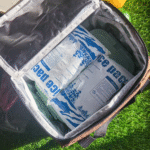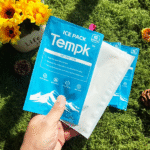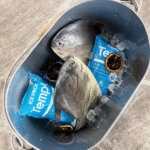Costco Dry Ice Pack: How to Ship Frozen in 2025
A Costco dry ice pack helps you keep products frozen from dock to doorstep with fewer temperature excursions. In this guide, you’ll size the right coolant, build a safer pack‑out, and meet 2025 labeling and handling expectations—without overspending on weight or materials. We merged and upgraded the strongest ideas from your three draft articles to create a single, search‑optimized resource.
-
What makes a Costco dry ice pack the right fit for your route? (frozen shipping, phase‑change options)
-
How do you size coolant by hours, payload, and insulation? (dry ice vs. gel vs. PCM)
-
What labels and safety rules apply in 2025? (plain‑English checklist)
-
How do you cut cost and waste without risking thaw? (smart insulation, hybrid pack‑outs)
What makes a Costco dry ice pack the right choice for you?
Short answer: Use a Costco dry ice pack when contents must arrive frozen; choose gel or PCM when you only need chilled ranges. Dry ice (solid CO₂) sits around −78.5 °C and prevents thaw. Gel packs hover near 0–5 °C, while PCMs (phase‑change materials) can target bands such as −21 °C or +5 °C for tighter control, less risk of freezer burn, and simpler handling.
Why this matters: You avoid damage from freeze‑sensitive products and reduce hazmat friction when frozen isn’t required. For ecommerce meal kits, mixed coolants (dry ice + gel) create zones—frozen entrées stay hard, greens stay crisp. For biologics, PCMs reduce swings and documentation complexity.
How does a Costco dry ice pack compare to gel and PCM?
Bottom line: Dry ice buys you the longest frozen hold time; gel and PCM buy you precision. If the route is long or hot, dry ice carries the peak load, while PCM or gel smooths edges—like shock absorbers for temperature.
| Cooling Option | Typical Range | Reusability | Cost Control | What it means for you |
|---|---|---|---|---|
| Dry ice pack | ~−78.5 °C (ultracold) | Single‑use | High hold time per lb | Best for “must‑arrive frozen” payloads |
| PCM pack | e.g., −21 °C, +5 °C | Reusable | Predictable | Tight bands for pharma/ice‑cream stability |
| Gel pack | ~0–5 °C | Reusable | Lowest complexity | Daily groceries, meal kits, short hauls |
Practical tips and quick wins
-
If any item must stay frozen: lead with a Costco dry ice pack on top of the load (cold falls), buffered by cardboard.
-
If “chilled, not frozen” is the goal: skip dry ice; use gel packs or +5 °C PCM to avoid ice crystal damage.
-
Pre‑chill everything: a warm payload can consume half your coolant before the route begins.
Field note: Teams that pre‑freeze payloads to target temperature before loading typically extend hold time by a full delivery window with the same coolant weight.
How do you size a Costco dry ice pack for your route?
Rule of thumb: Plan ~5–10 lb (2.3–4.5 kg) of dry ice per 24 h in a standard insulated shipper; adjust for ambient heat, payload mass, and box R‑value. Higher‑R insulation or vacuum liners push you toward the low end.
Step‑by‑step sizing (fast method):
-
Define the goal: frozen (≤−18 °C) or chilled (2–8 °C).
-
Estimate duration: door‑to‑door hours, not just transit.
-
Pick insulation class: soft liner, EPS foam, VIP liner.
-
Allocate coolant: dry ice for frozen, PCM/gel for chilled.
-
Add 15–25% margin for weekend delays or hot hubs.
Dry‑ice planner (copy‑paste mini‑tool)
Sizing table (quick reference)
| Use Case | Duration | Shipper Type | Suggested Coolant | Why it works |
|---|---|---|---|---|
| Frozen desserts | 24 h | EPS foam | 5–10 lb dry ice | Holds below −18 °C through last‑mile |
| Gene therapy vials | 24–36 h | VIP liner | 6–12 lb dry ice + −21 °C PCM | Redundant buffer, narrow swings |
| Meal kit (chilled) | 12–24 h | EPS/liner | 2–6 gel packs | Avoids freezing produce |
| Weekend trip | 48 h | Hard cooler | 10–20 lb dry ice | Split slabs, vented lid |
Real‑world guardrails
-
Vent, never seal: CO₂ must escape; do not use airtight boxes.
-
Weigh and mark net kg: carriers require the dry ice weight on the label.
-
Keep kids and pets away: frostbite risk; handle with insulated gloves.
Costco dry ice pack vs. alternatives: which and when?
Decision in one line: If it must be frozen on arrival, choose a Costco dry ice pack; if it only needs to be cold, choose PCM or gel. You’ll spend less, simplify handling, and reduce failed deliveries from accidental freeze.
Build a hybrid pack‑out (most routes)
-
Top layer: dry ice slab (if frozen required), buffered by corrugate.
-
Core: payload in primary packaging, minimal headspace.
-
Side rails: PCM or gel to manage peaks when the lid opens.
-
Bottom: absorbent or cardboard to protect from condensation.
| Hybrid Strategy | Dry Ice | PCM / Gel | What you gain |
|---|---|---|---|
| Frozen‑first | Lead | Light | Maximum frozen hold time |
| Balanced | Moderate | Moderate | Fewer swings, less CO₂ mass |
| Chilled‑first | None | Lead | No hazmat friction or freeze risk |
Cost control without risk
-
Upgrade insulation one level (liner → EPS, or EPS → VIP) to cut dry‑ice weight by ~20–30% on like‑for‑like lanes.
-
Right‑size the box: empty air is expensive to cool.
-
Use more small packs instead of one big block for faster pull‑down.
Costco dry ice pack safety, labels, and compliance in 2025
Non‑negotiables you can follow today:
-
Label “Dry Ice” / “Carbon Dioxide, solid” (UN 1845) and note net kg on the package.
-
Apply the Class 9 hazard mark when shipping by air and follow the current dangerous goods rules.
-
Provide ventilation in the outer packaging; never seal CO₂ inside.
-
Wear insulated gloves and eye protection; avoid contact with bare skin.
-
Train relevant staff on your standard operating procedure (SOP) for pack‑outs and acceptance checks.
Reality check: Many delays happen not from temperature failure but from missing net‑weight markings or unvented boxes. A simple SOP and checklist prevent most issues.
Simple shipper label example (text only)
2025 cold chain trends that affect your Costco dry ice pack choice
What’s new this year: Retailers are leaning into reusable PCM systems for chilled lanes and lighter, higher‑R shippers to reduce CO₂ mass on frozen lanes. IoT buttons and data loggers are now standard in QA workflows, making right‑sizing easier and audits faster. Expect continued focus on waste reduction, documentation clarity, and recipient safety inserts at delivery.
Latest developments at a glance
-
Smarter insulation: Lightweight liners rival foam on hold time, cutting DIM weight.
-
PCM portfolios: More SKUs at −21 °C and +5 °C simplify lane qualification.
-
QA by default: Off‑the‑shelf loggers democratize temperature proof for claims.
Market insight: Teams that pair slim VIP liners with moderate dry ice report fewer “overs” on coolant and better pass rates in acceptance checks, especially on multi‑stop air routes.
Frequently Asked Questions
1) Does a Costco dry ice pack keep food frozen during a 24‑hour shipment?
Yes—plan ~5–10 lb of dry ice per 24 h in a standard EPS shipper, then add margin for hot weather. A small slab on top plus side PCM reduces lid‑open spikes.
2) Can I reuse a Costco dry ice pack?
The dry ice itself is single‑use (it sublimates). Your hard cooler, liner, and any PCM/gel components are reusable—clean and refreeze per the manufacturer’s guidance.
3) Do I need special labels to ship with dry ice?
Yes. Mark UN 1845, include the net weight (kg), and use the Class 9 hazard mark for air shipments. Keep the package vented.
4) When should I skip dry ice?
If the product must not freeze (fresh produce, some biologics), use PCM (+5 °C) or gel. You’ll avoid freeze damage and hazmat complexity.
5) How do I keep groceries frozen on a long drive?
Pre‑freeze items, pre‑chill the cooler, place a Costco dry ice pack on top (buffered by cardboard), fill voids, and limit lid openings.
Actionable tips & checklists
Pack‑out checklist (frozen)
-
Pre‑condition: payload ≤ −18 °C, packs at full freeze
-
Insulation: EPS or VIP liner with tight fit
-
Coolant: Costco dry ice pack on top, PCM at sides (optional)
-
Void fill: eliminate headspace
-
Label: UN 1845 + net kg, Class 9 (air)
-
Vent: no airtight seals, add safety note for recipient
Pack‑out checklist (chilled 2–8 °C)
-
Coolant: +5 °C PCM or gel, no dry ice
-
Placement: packs on top and bottom for uniform pull‑down
-
Monitor: add a tiny logger for QA and claims
Data snapshot & planning table (save for your SOP)
| Route Length | Ambient Profile | Box Class | Costco Dry Ice Pack (lb) | Add‑ons | Outcome |
|---|---|---|---|---|---|
| 12–18 h | Mild | EPS | 5–6 | Optional gel | Arrives hard‑frozen |
| 24–36 h | Hot hubs | EPS | 10–12 | −21 °C PCM | Fewer spikes, safer margin |
| 48 h | Mixed | VIP | 12–16 | Minimal gel | Lighter box, compliant labels |
| 24 h (chilled) | Mild | EPS | 0 | +5 °C PCM | No freeze risk |
Summary & recommendations
Key takeaways: A Costco dry ice pack is the right tool when arrival must be frozen. Use PCM or gel for chilled ranges to avoid freeze damage. Right‑size your shipper and insulation before adding weight; then label UN 1845, net kg, and vent the package. Pre‑chilling and hybrid pack‑outs cut cost without sacrificing safety.
Next steps (CTA):
-
Map your top three lanes by hours and ambient.
-
Pick EPS or VIP, then size coolant using the quick estimator.
-
Implement the UN 1845 checklist and a one‑page recipient safety insert.
Need a verified pack‑out? Contact Tempk for a free route audit and a test pack‑out that passes acceptance checks on the first try.
About Tempk
We are a cold chain packaging team focused on frozen and chilled shipping that’s safer, lighter, and easier to document. Our kits pair right‑sized insulation with dry ice, PCM, and gel options you can standardize across lanes. Customers choose Tempk for fewer temperature deviations and cleaner SOPs their teams actually use. Let’s build a pack‑out that fits your product and your promises.
























